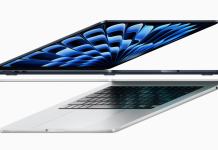Apple Store is a global chain of retail stores owned and operated by Apple Inc., offering a wide range of Apple products, including Mac computers, iPhones, iPads, Apple Watches, Apple TVs, software, and accessories. Opened in May 2001 by Steve Jobs, the first two stores quickly exceeded sales expectations and became a huge success. Over the years, Apple has expanded its retail presence and currently operates 526 stores in 26 countries. In 2011 alone, Apple Stores generated more than $16 billion in sales, placing them among the top-tier retailers worldwide.
In 2016, Angela Ahrendts, then Apple’s senior vice president of retail, unveiled a new store design in San Francisco that featured open spaces, large glass doors, and rebranded rooms. The goal was to transform Apple Stores into “town squares” where customers could receive product advice from trained staff, access support services in a Genius Grove, and participate in various sessions and community events. This redesigned concept has been gradually implemented in Apple Stores around the world.
While many Apple Stores are located in malls, the company has also established flagship stores in prominent locations, often featuring innovative architectural designs. The success of Apple Stores has had a profound impact on the consumer electronics retail industry, influencing other retailers and causing a loss of traffic and profits. Apple’s strong brand loyalty leads to long lines during new store openings and product launches.
Apple Store employees receive competitive salaries, educational benefits, medical assistance, and product discounts. However, there may be limited opportunities for career advancement within the company. Reports have highlighted challenges, including a hostile work environment, harassment from clients, internal criticism and a lack of substantial bonuses to secure major business contracts.
History of Apple Store :
The Apple Store story begins with the vision of Steve Jobs, co-founder and former CEO of Apple Inc. Jobs believed that the traditional retail model for selling computers was inadequate and that Apple needed its own stores to provide a unique customer experience. . The first Apple Store opened its doors on May 19, 2001 at Tysons Corner Center in McLean, Virginia, United States.
At the time of the launch of the first Apple Store, many people were skeptical about the idea of Apple opening physical stores. However, Jobs was determined to create a space where customers could fully experience Apple products and receive expert advice and support.
The Apple Store design was distinctive and minimalist, with a clean modern aesthetic. It was divided into several sections, including a “Genius Bar” for product support and repairs, an area dedicated to software demos, and a large space for customers to interact and test Apple products.
Despite initial skepticism, the Apple Store concept was a resounding success. The company quickly expanded its retail presence, opening more stores in the United States and eventually expanding internationally. Apple’s retail strategy played a crucial role in the company’s resurgence, allowing Apple to control the customer experience and showcasing its innovative products directly to consumers.
In 2004, Apple opened its first international store in Ginza, Tokyo, Japan, followed by its first UK store on London’s Regent Street in 2004. Over the years, Apple continued to open flagship stores in prominent locations around the world. the world, including New York. the city’s Fifth Avenue, Nanjing Street in Shanghai and Covent Garden in London.
The success of the Apple Store model led to several retail innovations. The Genius Bar, where customers could receive technical support and troubleshooting, became a hallmark of the Apple Store experience. In addition, Apple introduced services like Personal Setup, where customers could receive one-on-one assistance setting up their new devices.
In recent years, Apple has continued to expand its retail presence and adapt to the changing needs of consumers. The company has embraced new store formats, such as the Apple Store-within-a-store concept in partnership with Best Buy in the United States. Apple has also focused on creating community spaces within its stores, hosting educational workshops, and offering various Today at Apple sessions, which provide creative and educational experiences for customers.
The Apple Store has become an integral part of Apple’s business strategy, not only as a place to sell products, but also as a means to connect with customers and build brand loyalty. With its emphasis on the customer experience, elegant design, and knowledgeable staff, the Apple Store has played an important role in shaping the retail industry and has become a symbol of Apple’s commitment to innovation and excellence.

How to Works Apple Store :
Apple Store is a retail store operated by Apple Inc. that sells Apple products, including iPhones, iPads, Mac computers, Apple Watches, and other accessories. This is how the Apple Store normally works:
Store Design: Apple Stores are designed with a clean, minimalist aesthetic. They typically have a spacious layout with wooden tables and racks displaying Apple products. The store is usually divided into different sections, each dedicated to specific product categories.
Product Display: Apple products are prominently displayed on tables and shelves throughout the store. Each product has a clear description card and price tag. You can interact with the devices, test their features, and get a hands-on experience.
Apple Specialists: Apple Stores have trained staff members called Apple Specialists. These specialists are trained to help customers with inquiries, provide product recommendations, and offer technical support. They wear distinctive blue T-shirts and are available throughout the store to assist customers.
Appointments: Apple Stores offers a service called “Today at Apple,” which includes various workshops, training sessions, and creative classes. Some of these sessions require prior registration or scheduling. You can check the Apple Store website or app for available sessions and schedule appointments if needed.
Purchases: If you decide to make a purchase, you can approach any available Apple specialist or go to the designated checkout area. The staff will help you with the transaction, answer any questions and help you select additional accessories if necessary. Payments can be made using a variety of methods, including cash, credit cards, Apple Pay, or other accepted payment options.
Support and services: Apple Stores offer support services such as troubleshooting, repairs, and device setup assistance. If you encounter a problem with your Apple product, you can make an appointment at the Genius Bar, which is a dedicated area within the store where Apple technical experts provide one-on-one support and diagnose problems.
Online ordering and pickup: In addition to in-store purchases, you can also order Apple products online through the Apple website or app and choose the in-store pickup option. This allows you to reserve a product online and pick it up from the Apple Store at a convenient time.
Remember that specific procedures or services may vary between Apple Store locations, so it’s always a good idea to check the official Apple website or contact your local Apple Store for the most accurate and up-to-date information.
Third-party retail :
Steve Jobs returned to Apple in 1997 as interim CEO and focused on improving the retail presentation of Macintosh computers to boost sales. Despite launching new products like the iMac and PowerBook G3, Apple still relied heavily on large computer and electronics stores, which lacked Mac-friendly sections and failed to build customer loyalty. These stores even promoted their own generic PCs with cheaper components, diverting potential Mac buyers. In 1998, Tim Cook, Apple’s senior vice president of worldwide operations, announced that Apple would break ties with underperforming retailers and focus on CompUSA. This move led to a significant reduction in authorized Mac resellers from 20,000 to 11,000. Apple aimed to rival Dell and adopted a “store-within-a-store” concept, with a portion of CompUSA stores dedicated to products Manzana. However, this approach fell short of expectations due to low traffic areas and poorly trained staff. CompUSA president Jim Halpin resigned, and Apple added Best Buy as a second authorized reseller. Challenges persisted, with low profit margins for resellers and inconsistent service and support experiences.
The online store revolutionized by Apple was announced by Steve Jobs on November 10, 1997. This move was a response to Michael Dell’s statement that he would shut down Apple and return money to shareholders. Jobs and his team worked on building an online store that would surpass Dell’s. In August 2015, Apple revamped its online storefront, turning the entire website into a retail experience.
The idea for Apple Stores originated from Steve Jobs’ desire to change the relationship with the customer and have more control over the presentation of Apple products and the brand’s message. In 1999, Jobs recruited Millard Drexler, the former CEO of Gap Inc., to serve on Apple’s board of directors. He also hired Ron Johnson from Target in 2000. Under Johnson’s leadership, Apple began developing mockups for its stores. On May 15, 2001, Apple opened its first store in the Tysons Corner Center shopping mall in Virginia.
Contrary to predictions of failure, Apple stores quickly proved successful. In 2004, they reached $1 billion in annual sales, becoming the fastest retailer in history to achieve this milestone. Sales continued to grow, reaching $1 billion per quarter in 2006. Apple Stores were known for their unique customer experience and sleek design, raising the value of the company’s brand.
The success of the Apple Stores influenced other companies, and many followed a similar retail model. Apple also reestablished ties with major retailers like Best Buy and Staples, providing dedicated Apple sections within their stores. Apple has continued to expand its retail presence globally.
In 2016, Apple redesigned its Union Square Apple Store in San Francisco, creating a more interactive and community-oriented space. The store featured large glass doors, touch-sensitive tables, renowned rooms, and learning and support areas. The redesign was intended to turn Apple Stores into “town squares” where people could come together and engage in human experiences.
In addition to brick-and-mortar stores, Apple expanded its “Today at Apple” educational sessions to offer free hands-on sessions for creative skills. Starting in May 2018, Apple also added video walls to its stores around the world.






